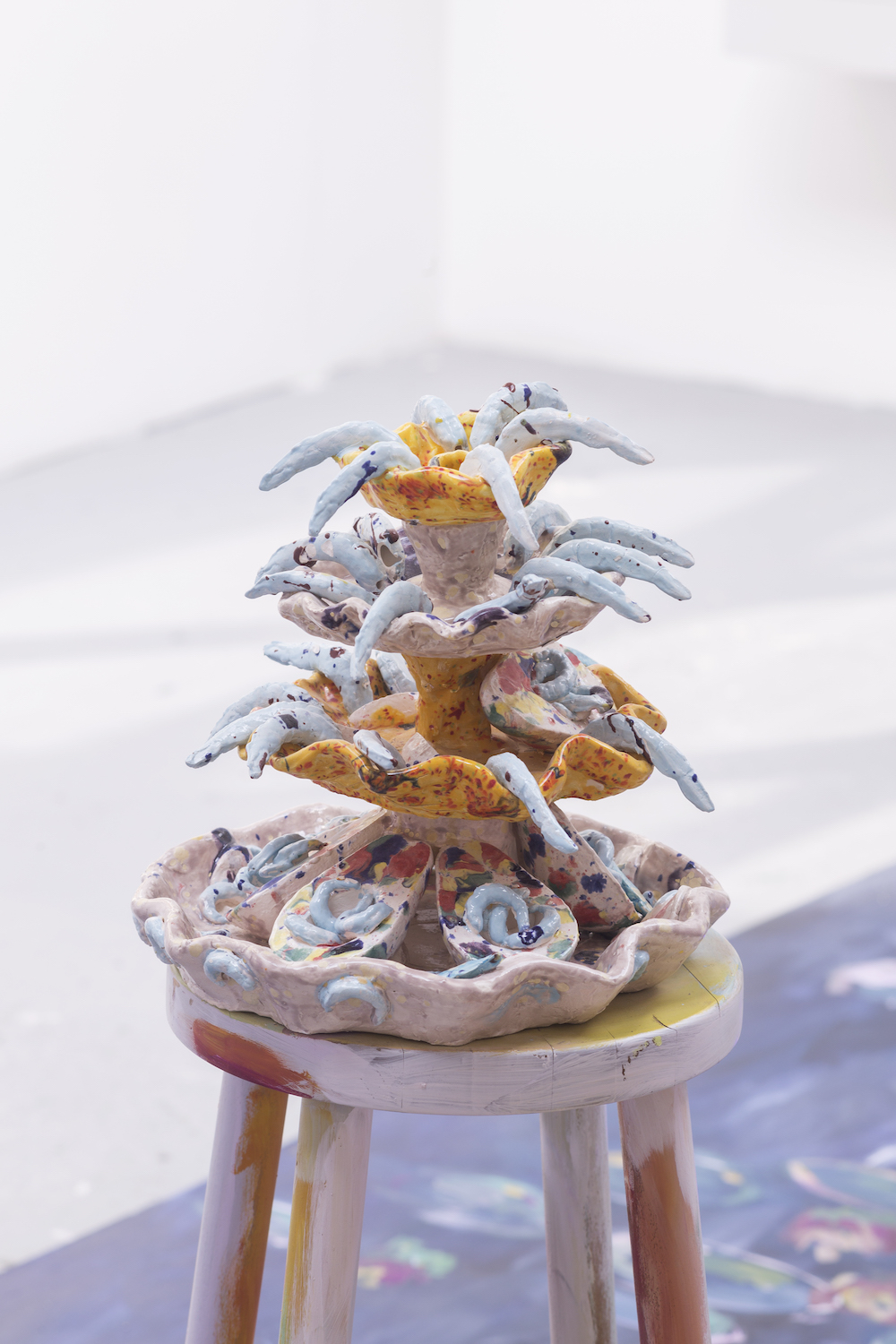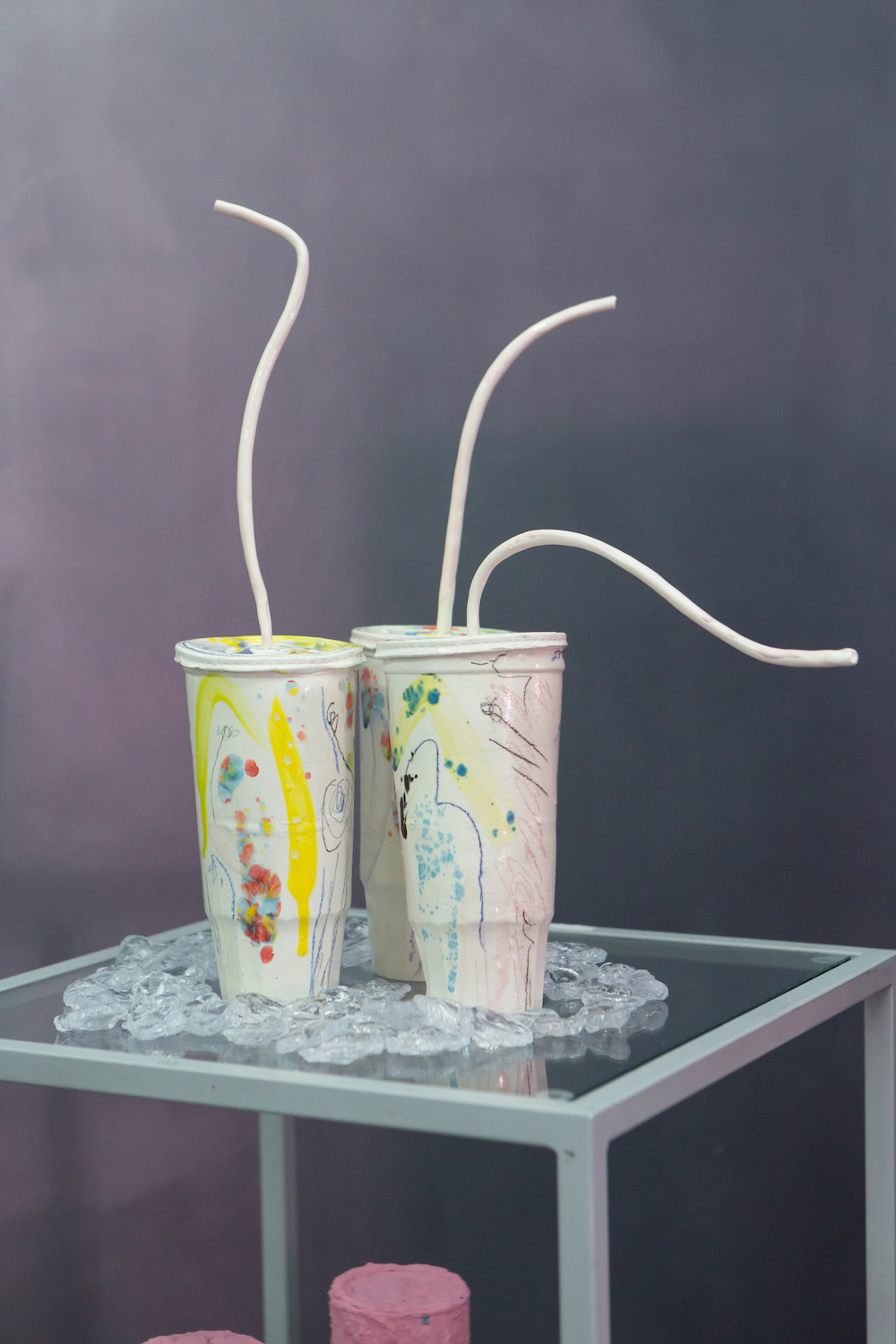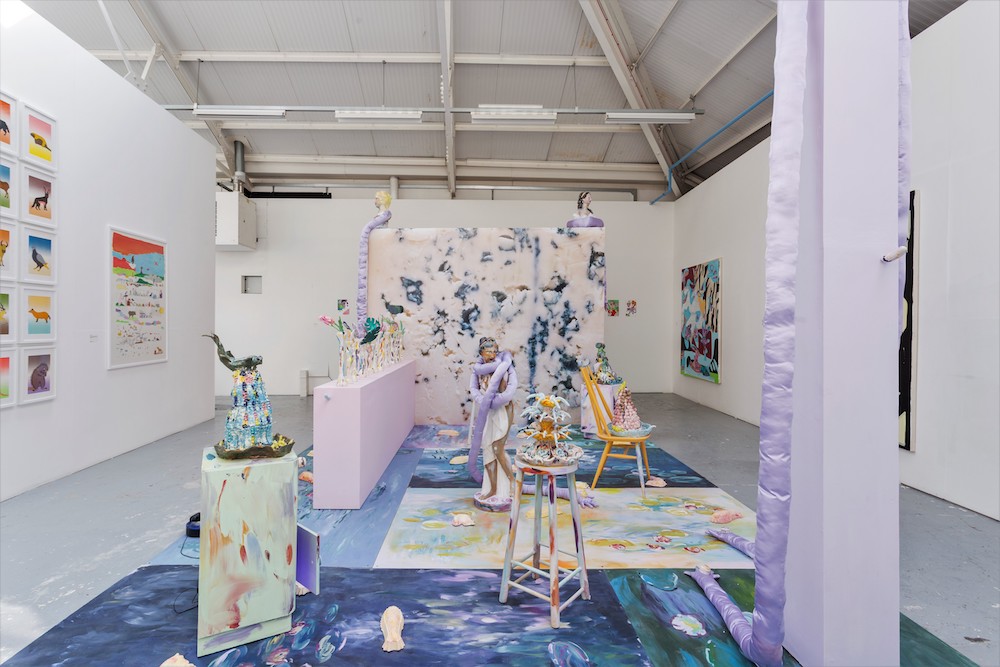
Graduating with an MA from the Royal College of Art in London this Summer, Mendick left the school with an outstanding installation. Oozing with ceramic profiteroles and prawns, swimming with Matisse-esque brush strokes and watched over by busts that wrapped and stretched their metres-long purple satin arms around the space, the piece was at once enticing, overwhelming and comforting.
The installation Clever Girl that you created for the RCA MA show had a huge presence. Can you tell me a bit about the work?
I think of Clever Girl as a sister exhibition to the installation I created whilst on exchange at the University of Texas, She’s Really Nice When You Get to Know Her. I felt a great deal of loneliness in America, and the works I created in the States became surreptitious offerings of friendship, willing those around me to warm to me and to comprehend how desperately I was trying to assimilate.
Returning to the Royal College, I wanted to create an installation that revelled in the criticisms that I had been given about my work: too loud, too colourful, too feminine, too British. Clever Girl became an exploration of paradoxes: celebrating gluttony and admitting body issues, being simultaneously proud and scared to be female, understanding that home can be tempestuous and frightening but still the place where you belong.

I can’t stop thinking about that blue cheese wall! Food features heavily in your work, why is this?
Foodstuffs are an excellent vessel for exploring all aspects of culture, high and low, due to their inherent and essential involvement in all our lives. More importantly, many of us have very complicated and painful relationships with food and thus, our identity. The pieces I create are always offerings, morsels to share and invitations to the viewer to interact and share.
I was brought up in a household where my father constantly monitored my sister’s, mother’s and my own weight. If I ate too much or took a second helping, he would humiliate me, so it became something I did in private, I wouldn’t eat in front of men.
It is political to talk about being a woman who is unashamedly insatiable. Although it can be painful and embarrassing, I utilize foodstuff in order to talk about weightier issues such as loneliness, female oppression and sexual desire.
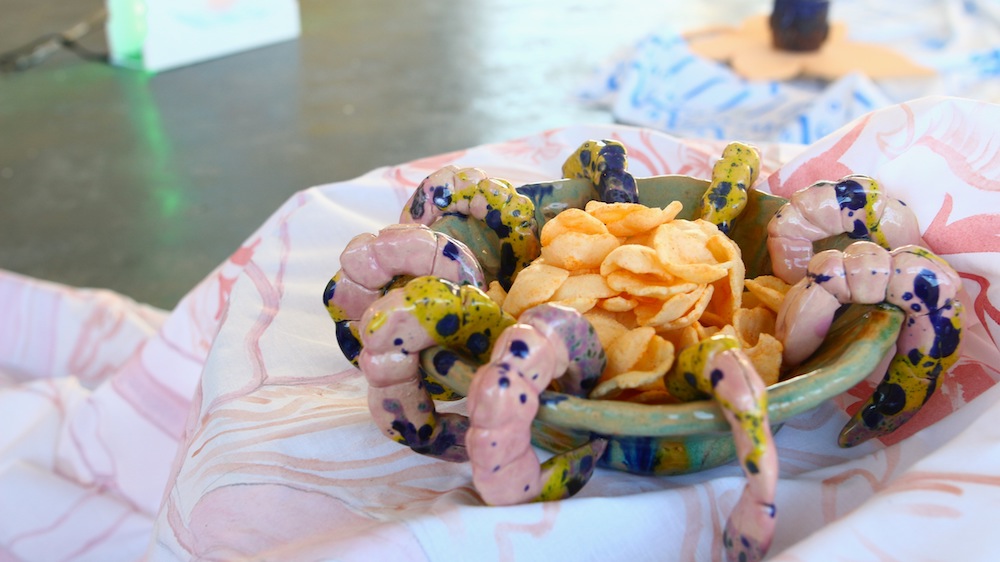
You work a lot with installation, creating whole sickly-sweet environments. What is it that makes installation so irresistible to you?
I often think of my installations as sets, domestic rooms in which to tell a particular story or address a particular theme. The ceramics are usually my protagonists, the walls my backdrops, the furniture and plinths a way to encourage the audience to navigate the space and forge a dialogue with the work.
Creating work is such a privilege, I have a deep anxiety of disappointing the viewer. After being incapacitated by depression, I truly feel that time is precious and if a viewer is giving you theirs, then put on a fucking good show.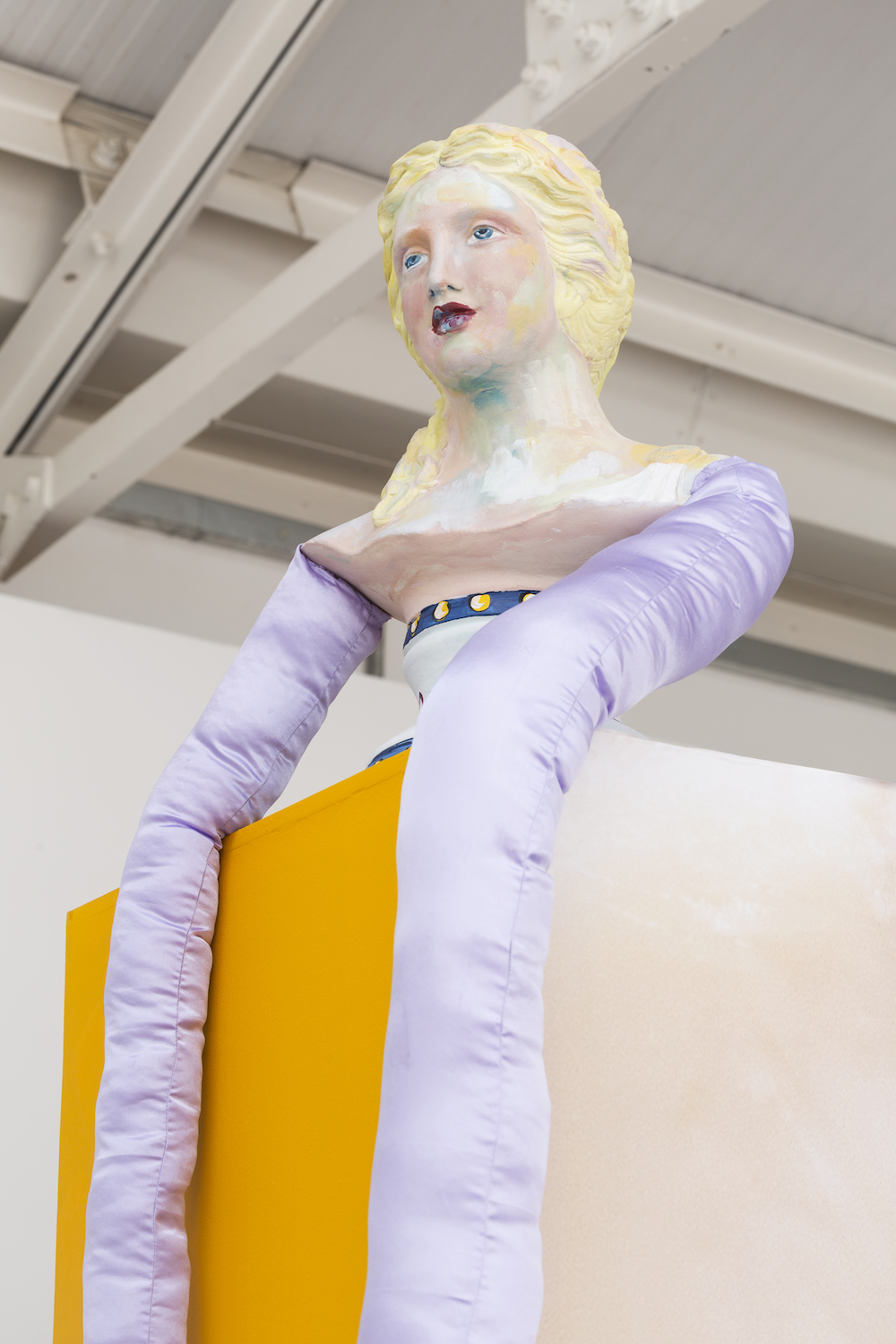
Your painting alludes to Impressionist and Post-Impressionist painters like Monet and Matisse, artists whose work is seen as “serious” painting. Why make these references?
When first studying art, our homework was always to copy masterpieces, art created by men. I agonized over Monet’s lilies, Botticelli’s Venus, Picasso’s crying woman and, of course, Van Gogh’s sunflowers, greedily absorbing and reproducing each mark by them, my success only being validated by how proficiently I could duplicate a man’s art.
When I started at the Royal College, I visited the Courtauld and became enamoured by the work of the Wild Beasts. I started painting large-scale banners with Raoul Dufy’s flowers and Matisse’s interiors at the forefront of my mind. I wanted to show my appreciation of these greats and hark back to this peculiar and archaic way of studying art.
The reaction to the banners was hilarious. I was told by lots of men that they couldn’t relate to the work’s camp subject matter of flowers and interiors, or were put off by my gregarious and sickly sweet colour palette. Yet at this time, Painting the Modern Garden: Monet to Matisse at the Royal Academy was the most popular show of the year. I literally had to battle sandal-wearing old men to get a peek at a Cezanne.
I realized then that citing these “serious” male painters meant that I could have the freedom to paint whatever I wanted without the fear of being dismissed or, if I was, I could take ownership of this dismissal.
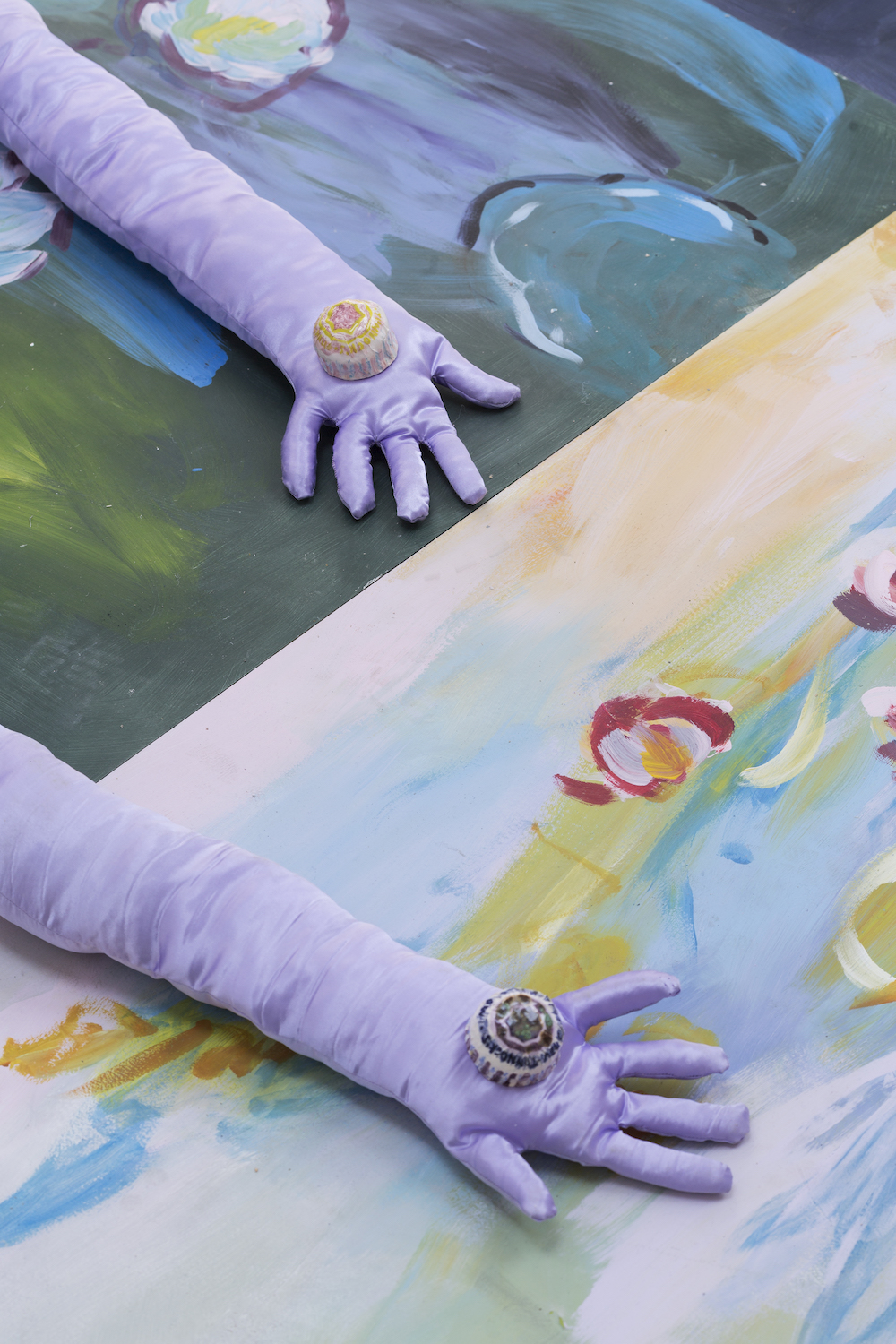 Discussion around feminism has come back into the mainstream massively in the last few years. How do you want your work to fit into this? Do you want your art to be seen as feminist art?
Discussion around feminism has come back into the mainstream massively in the last few years. How do you want your work to fit into this? Do you want your art to be seen as feminist art?
In 2017 I collaborated with numerous incredible female artists to curate two exhibitions that explore the position of the female artist in the present political climate: Sell Yourself and Herland. As I utilize ceramics, textiles and pastel coloured paint, my work will be deemed feminine, but in using these I am able to erupt these clichés and reauthorize the connotations of the word. I want to challenge viewers to consider that desire, ambition, anger and greed can be womanly attributes.
Do I want my work to be seen as feminist art? Of course, I do. Feminist isn’t a filthy word. A feminist believes that women should be socially, politically and economically equal to men. If my practice promotes that successfully in any way, then I would relish the label of being a feminist artist.
